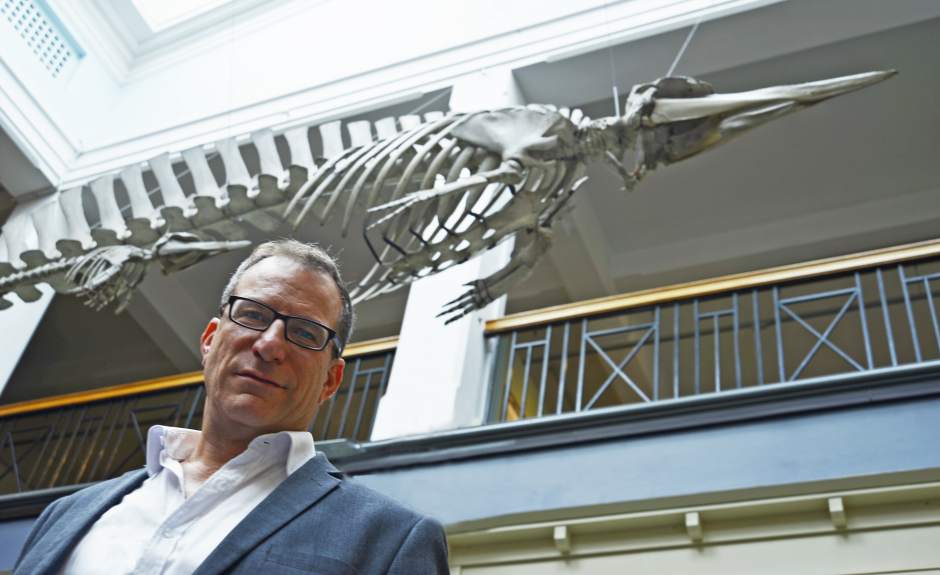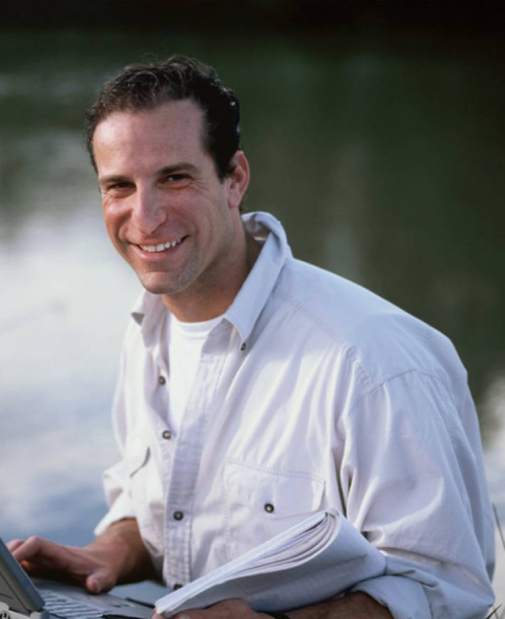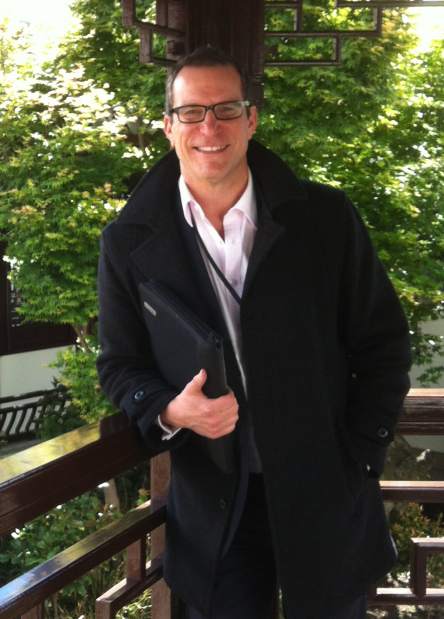New Carnegie Museum director finds inspiration in natural history
As a conservationist, dinosaur enthusiast, scientific illustrator, opera singer and prolific author, Eric Dorfman has been praised as a Renaissance man.
“It's something that you can never say about yourself, but it's wonderful to hear,” says Dorfman, a California native with a decided trace of a charming New Zealand accent developed over his 14 years living there.
Jo Ellen Parker, president and CEO of Carnegie Museums of Pittsburgh, is the most recent to point out Dorfman's wide range of interests, emphasizing his expertise in environmental science accompanied by a passionate commitment to the arts, as she officially announces his appointment as the new director of Carnegie Museum of Natural History. He will begin Aug. 31.
“It was very important for us to recruit just the right leadership for the museum,” Parker says. “One of his real, excellent qualities is his ability to help the public understand what the history we interpret means to us today and for tomorrow. It is an exciting time. The challenges are what create the exciting opportunities.”
Dorfman, 51, in a phone conversation from his office at the Whanganui Regional Museum and Ward Observatory in New Zealand, where he has been director since 2010, embraces that excitement. He says it is “an opportunity that I couldn't pass up.”
“I am incredibly fortunate to be joining one of the great natural history museums in the United States as its director,” he says.
There are inspiring opportunities ahead for museums, Dorfman says, “for really clever and deep thinking about what we do and how we do it.”
“A museum is a place to contemplate the past and plan for the future. As has been said, it's a ‘safe place for unsafe ideas.' We need to challenge ourselves,” he says. “Insofar as I can help spark those conversations, I will feel I have done my job.”
Lee Foster, chairman of the natural history museum's board and a life trustee of Carnegie Museums, says the board was looking for an individual who had proven leadership and management skills coupled with science credentials, a passion for improving the visitor experience and connecting that experience with research, collections and exhibitions that are relevant to the community.
“Eric hit on all those points, as well as demonstrating an empathy for the arts that opens the potential for great collaboration between our Oakland museums,” he says.
Under his supervision, annual visitation at the New Zealand Museum climbed almost 400 percent, and it received commendations for business practice and environmental sustainability, lifting Whanganui's profile nationally and internationally, says Adam Kearse, chair of the Whanganui museum.
“He's done some fantastic work for us, getting the staff all working toward a common goal. Wherever he goes, his organizational ability and what he has done and his knowledge stands him in good stead,” Kearse says. “He will be missed.”
Dorfman particularly savors the chance to contribute to the Carnegie's family of museums and the opportunities afforded for “cross-pollination” across the institution, he says.
“The nexus of art and science is something that is being explored today in exciting ways,” he says. “This role is about taking something that is fantastic and making it even better.”
He cites Leonardo sa Vinci as one of his heroes. “For him, the whole concept of art and science blended,” Dorfman says.
An early priority will be to “understand the landscape of the stakeholder,” engage with museum visitors about their hopes and expectations for the museum and “connect the museum with Pittsburgh and the rest of the U.S. and internationally.”
With his diverse career in arts and performance, among other areas, he believes he can speak the language of science, of exhibition developers and the public in communicating with them about the museum.
“Eric's a great guy. He's intelligent, a serious listener and his take on the world is always stimulating. He pays attention to getting the job right, and he's fun to be with,” says Mike Houlihan, former CEO of Te Papa Tongarewa, New Zealand's national museum, where Dorfman formerly was senior manager of science development. “He is a first-rate scientist with the skill to wow audiences with his creativity and insights, a scholar who has the knack of making natural science understandable and engaging to scientists as well as children.”
Pittsburgh will see him actively promoting the city, Houlihan says, and playing a leading role in its cultural life.
“How many people do you know who can talk knowledgeably about marine birds, Elizabethan portraits, intangible natural heritage and opera?” asks Conal McCarthy, chair of museum and heritage studies at the Victoria University of Wellington, New Zealand, where Dorfman was an adjunct lecturer in museum studies.
Dorfman, he says, has been one of the most active and accomplished museum professionals in New Zealand and Australia in the past 15 years. “Pittsburgh can count itself lucky to have snapped him up!” he says.
“One of the things we can do for the community and museum is connect them closely together,” Dorfman says. “Any director who comes in is really providing stewardship for that period of time he or she is in that role. This is one checkpoint in a very long history of the institution. My goal is to do it proud when it's under my care.”
Rex Rutkoski is a staff writer for Trib Total Media. He can be reached at 724-226-4664 or rrutkoski@tribweb.com.



